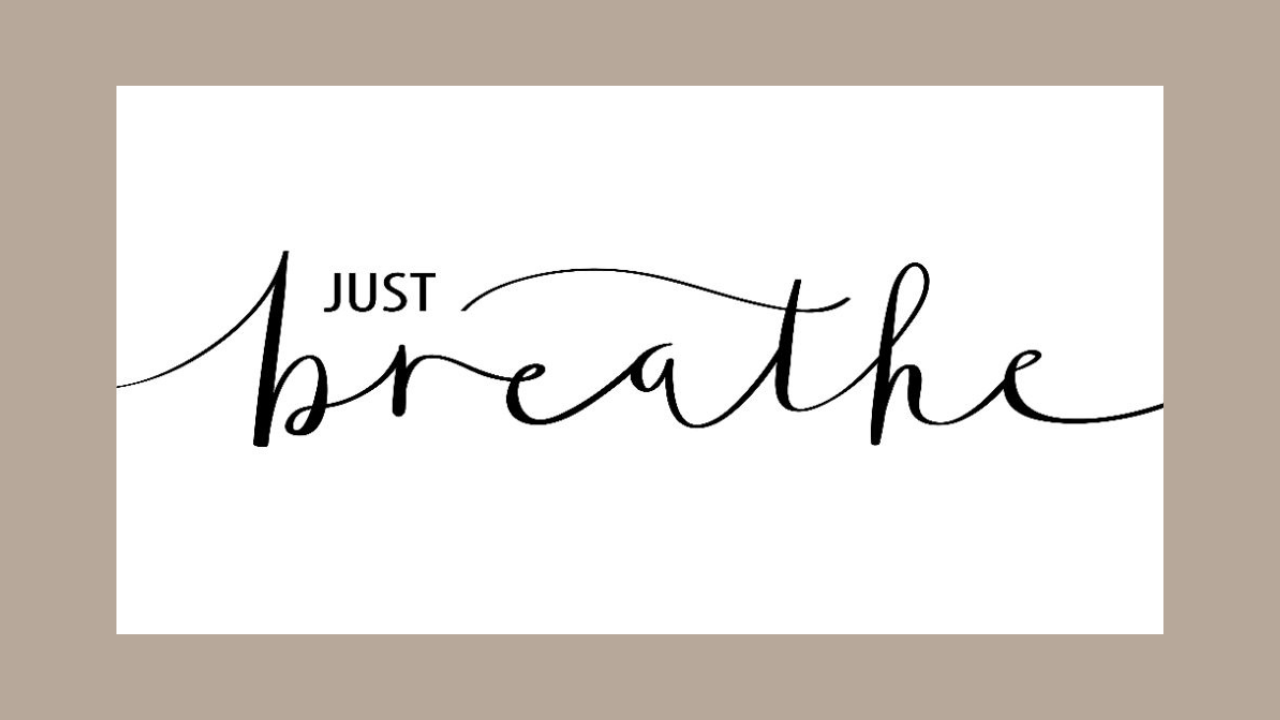The fastest, easiest, and cheapest way to calm down

Full confession: the last few weeks have felt a bit more harried than usual, and even though I try to be a good role model in all things well-being (you know, “walking the talk” and all), sometimes I have to remind myself of the very things I speak and coach about.
This time of year is full for me with work commitments, some home upgrades, in addition to the constant balance of motherhood.
Then it hit me, I was cranking away on my too-long to-do list, and I noticed I was breathing in quick, shallow breaths. My heart rate felt high, and I felt anxious and overwhelmed. It wasn’t comfortable at all.
So I reminded myself about some of the things I teach when it comes to breathing because my logical brain knows that the cheapest, fastest, and most effective way to calm my brain and my body is through the almost-instant power of slower, intentional breathing.
Breathing isn’t just important for staying alive; it also has a huge impact on calming our nervous system. When we take slow, deep breaths, we activate the prefrontal cortex, which is responsible for rational thinking and decision-making. At the same time, we disengage the amygdala, which is associated with our fight-or-flight response. (You know I love me some good brain science!)

Deep breathing techniques like diaphragmatic breathing, belly breathing, or (my go-to) box breathing can help us harness the power of our breath to reduce stress and anxiety. When we consciously focus on our breath, we activate the parasympathetic nervous system, which promotes relaxation and counteracts the effects of the sympathetic nervous system which is responsible for our stress response.
By intentionally engaging the prefrontal cortex through deep breathing, we can regulate our emotions and make more rational decisions. This is because the prefrontal cortex helps us override impulsive reactions and think more clearly. So, by activating this part of the brain, we can better manage our emotions and respond to stressful situations in a calm and collected manner.
On the flip side, when we're stressed or anxious, the amygdala takes over and triggers the release of stress hormones like cortisol and adrenaline. This can put us in a heightened state of alertness, increase our heart rate, and cause shallow breathing.
But by consciously engaging the prefrontal cortex through deep breathing exercises, we can counteract the amygdala's influence and bring our nervous system back into balance.
Deep breathing has even more benefits! It can improve lung function, increase oxygen levels in the blood, and enhance our overall well-being. That's why deep breathing exercises are often used in practices like yoga and meditation to promote relaxation and mindfulness.
So when you’re feeling overwhelmed, pushed to your limit, and your mind feels like a hamster on a wheel that’s had three shots of espresso and an energy drink, try some deep, slow breathing.
Something as simple as some classic box breathing (breathe in for four counts, hold for four counts, breathe out for four counts, pause for four counts) could bring your frantic mind back under control.
It may feel trite, but there’s a good reason that simply applying the advice to “take a few deep breaths” can make all the difference - there’s science to back it up! Give it a shot!

